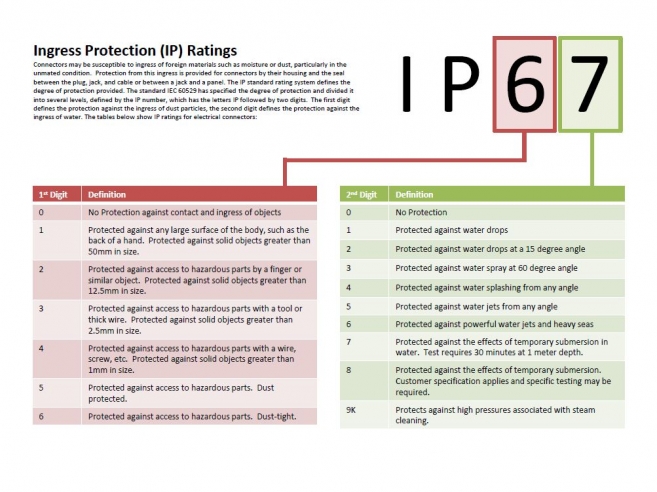Ingress Protection IP Codes - What Do They Mean?
One thing you’ll see us listing on most of our reviews is the IP code of the light we’re reviewing. If you mention IP these days most people assume you’re talking about the internet, but in our reviews it means something different. It refers to the Ingress Protection rating, a standard that’s used internationally for any electrical device in a casing.
IP codes are based on a standard set of definitions that’s published by the International Electrotechnical Commission, which has been setting standards for electrical equipment since 1906. These standards are used all over the world, which is useful when you’re dealing with imported gear. They have standards for a lot of things, including how good equipment is at keeping stuff that shouldn’t be in it out. That’s an important factor when you’re looking at lights for the outside of your vehicle. Lightbars are exposed to the elements at the best of times; even driving along a road they’ll be exposed to dust and insects, and of course rain isn’t something you want inside something wired to your battery. You need to be confident that your stuff is tough enough to survive what’s going to be thrown at it and the IP codes we quote can help give you that confidence.
The codes themselves are pretty simple. They’re always written as IP followed by two numbers. As we already said, IP stands for Ingress Protection and it covers everything from how waterproof an electrical device is to whether you can stick your fingers through gaps in the casing. Each of the numbers covers a different type of proofing, so you just have to know what they mean and you’ll have a good idea of how well sealed a lightbar is.
The first digit of the number tells you how well sealed a device is against solid objects, as well as the protection it gives you against touching dangerous internal parts. There are seven levels, numbered from 0 to 6. Here’s a quick summary of what they mean:
|
Level |
Blocked object size |
Effectiveness |
|
0 |
- |
No protection. Basically this means you can stick your hand in if you want. |
|
1 |
>50mm |
Large body parts, like your hand, will be blocked. |
|
2 |
>12.5mm |
Fingers can’t be stuck inside. |
|
3 |
>2.5mm |
Screwdrivers and other tools can’t be inserted. This is the absolute minimum if you have young kids around. |
|
4 |
>1mm |
Wires, screws and so on will mostly be blocked. |
|
5 |
Dust protected |
Some dust might get in, but not enough to do any harm. No solid objects can be inserted. |
|
6 |
Dust tight |
The unit is completely sealed against dust or other particles. |
The second digit lets you know how waterproof a device is. It works in pretty much the same way except there are nine levels:
|
Level |
Protects against |
Effectiveness |
|
0 |
- |
No protection |
|
1 |
Dripping water |
Water dripping vertically on the device has no effect. |
|
2 |
Dripping water at 15° |
Water dripping vertically on the device with the casing tilted at 15° has no effect. |
|
3 |
Spraying water |
Water sprayed at up to 60° from vertical has no effect. |
|
4 |
Splashing water |
Water splashed at any angle has no effect. |
|
5 |
Water jet |
A jet of water from a nozzle has no effect. |
|
6 |
Powerful water jet |
High pressure water jets have no effect. |
|
7 |
Immersion up to 1m |
Immersion in water for up to half an hour, with the base of the device at least 1m under the surface, has no harmful effects. |
|
8 |
Immersion beyond 1m |
The device can be continuously submerged at a depth specified by the manufacturer. This usually means it’s completely sealed. |
When it comes to lightbars we like to see a rating of at least IP66 and ideally IP77. That means a light that’s totally sealed against dust and can stand water hitting it at high speed. We’ll always mention the IP code for a light if we know it, and let you know if we think there’s an issue.


